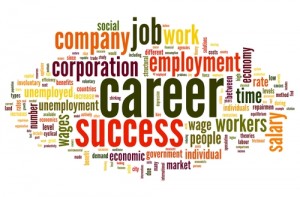

Our fundraising goal for 2020
 Once a company has adjusted their infrastructure to complement the new green standards the market now expects from private businesses, the next part of the evolution is to develop community-driven practices.
Once a company has adjusted their infrastructure to complement the new green standards the market now expects from private businesses, the next part of the evolution is to develop community-driven practices.
The easiest way to at least give the appearance of community vestment is by donating funds to the charities that positively impact the communities that support your business.Writing a cheque is easy, takes little time or energy, and is vital to the organizations that depend on donations.
However, a new trend is emerging; the ‘teach someone to fish’ philosophy. Many companies now donate staff or expertise to the charities they support instead of money.
Recently, Toyota donated efficiency to the New York City food bank, helping them streamline their process to better serve the 1.5 million people that depend on them annually. Helping a charity save money by helping improve their processes can be far more valuable in the long term than just handing over one big cheque that would quickly dissolve in an inefficient practice.
TWD Inc. helps charities fundraise through our logistic services. We also donate trucks, drivers to make food bank and other deliveries. We do things like open our office to the charities we service. They are free to borrow our photocopier, use our paper, printer, telephone, and postage. It may seem like a small thing, but in the course of a year, it adds up! It’s easy for us to provide these things and can have a huge impact on the charities we serve.
In our opinion, it’s easy to find a charity everyone rallies around just to say “I’m nice to them, so now buy my product.” However, true community-driven practices are ongoing ventures that continue to uplift the community in profoundly meaningful ways. In order to do that, an organization has to be willing to look at and embrace sometimes challenging community issues.
TWD Inc. has chosen to tackle issues around crime and barrier employment. Everyone is affected by crime, especially crime committed by repeat career criminals. Most people don’t want to think about it, because we are all afraid of it; but it affects us all.
Barrier Employment-Why Reward A Criminal With A Job?
TWD Inc. has always been dedicated to barrier employment because our president, having had personal history that affected him deeply, decided many years ago that his personal goal was to get as many ‘guys off the street’ as was humanly possible. He has been a barrier employer for decades.
He realized, after having talked to the many dozens of people he redirected through employment over the years, that the career criminals he met were all attracted to crime for the money. Many did not have what it took to be gainfully employed in traditional ways, and crime seemed like the only way to a living wage. Many of these people don’t make any significant money in a life of crime – in fact they likely made similar amounts as they would have if they had a ‘decent job’. The fact is, the majority of these people would opt for a ‘real job’ if it paid enough to live in dignity, something we feel the current minimum wage does not allow.
His barrier employment philosophy is, “If money got them in, money will get them out. Everyone deserves a good job.”
Are They Good Employees?
The best! Although our sponsoring motivation to shift to barrier employment was kindness, we have found over the years that often our best employees were from the barrier realm. It turned out to be a smart business move. For many, finding a ‘good job’ is so elusive but when given the opportunity, they work harder than most to prove themselves or secure their place. Not to mention, there is no one more motivated than a person in the throes of self transformation. The bonus is, gratitude breeds loyalty, one of the most valued qualities in an employee.
Many of the people that we have hired are so motivated to succeed in order to ensure they will never have to return to their old life, that they grow the business far faster than others. As soon as we started this hiring practice, we ended up training individuals that later became managers and are so eager to grow big enough to ‘save others’ that our business has boomed without our executives so much as breaking a sweat. Our staff grew the business as management watched in utter amazement.
Belonging
Unfortunately, many lonely people are drawn to the criminal lifestyle for a sense of belonging. Often shunned by society after release, these lonely souls will be coaxed back to their old lives, not for the money, but for some semblance of fitting in.
TWD Inc. is run like a family and although corporate titles may be on business cards, at the office everyone is “bro” and “sis”, except our president who we all call Dad. Because many of our staff have painful histories, our management is loving as well as motivating. There is a lot of empathy, flexibility and positive reinforcement in our corporate practices, and that energy permeates to how we treat our customers as well. Love is contagious, even in business.
TWD Inc.’s commitment to barrier employment has made us not just a better company, but has made us all better people. It has been one of the best business decisions we have made, and we challenge other companies to follow!
We recommend contacting the John Howard Society of Ontario, who is developing a training program for companies interested in barrier employment. They are an excellent resource for any company thinking about barrier employment.